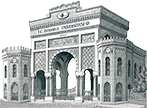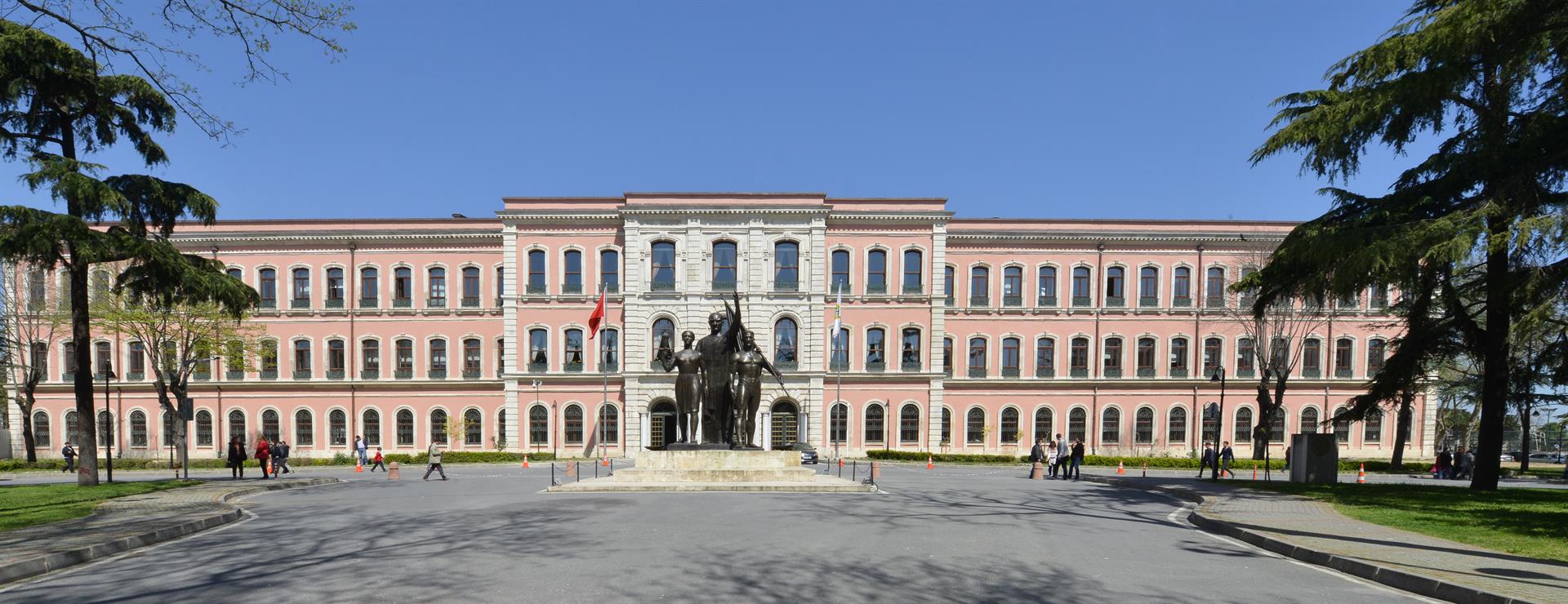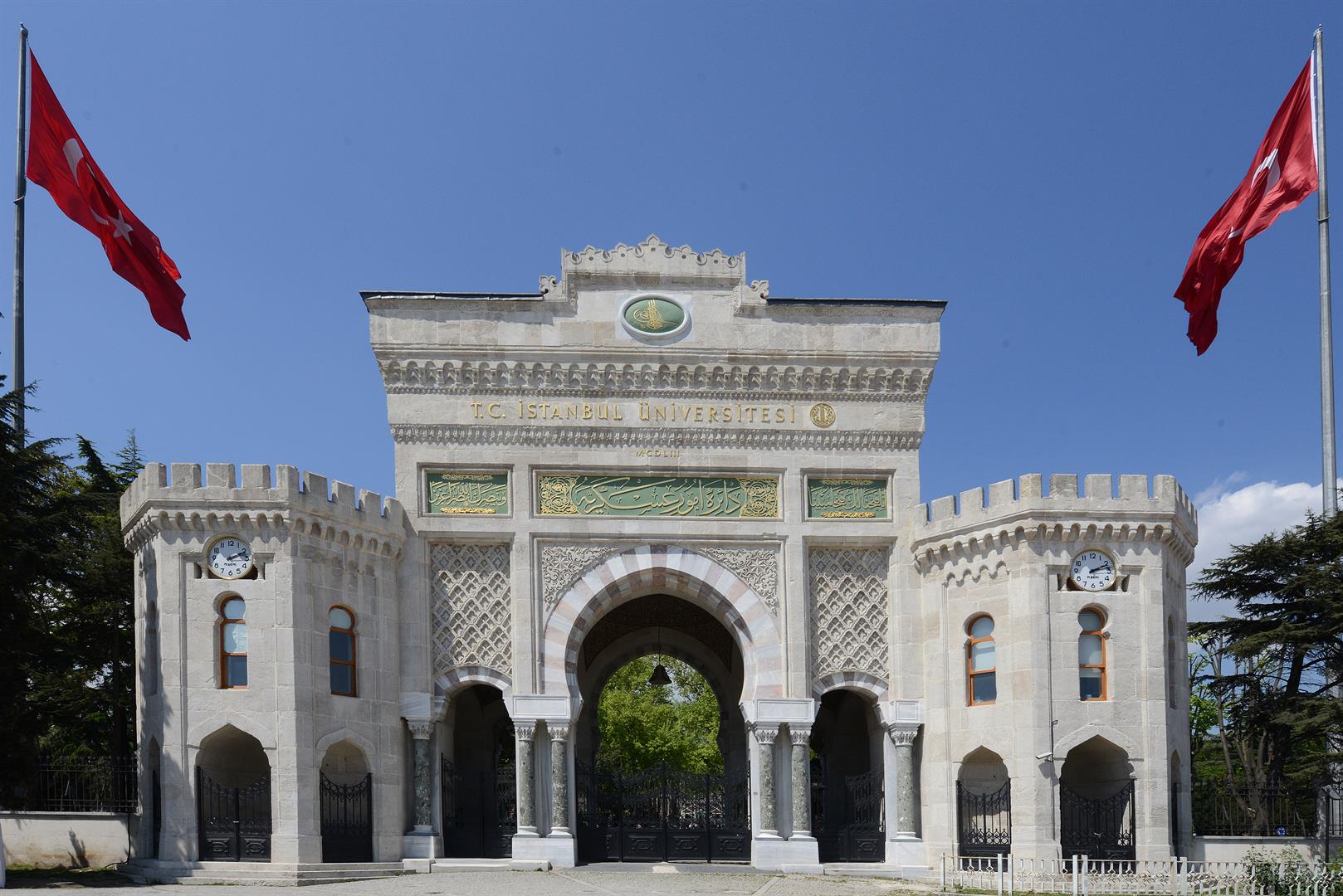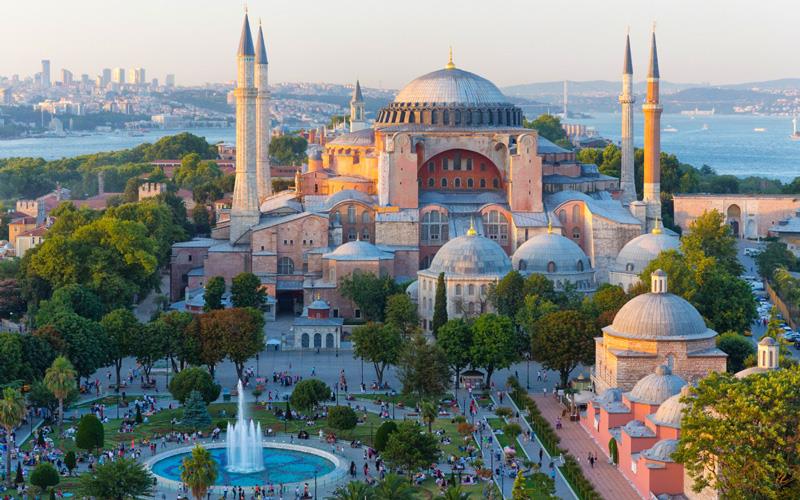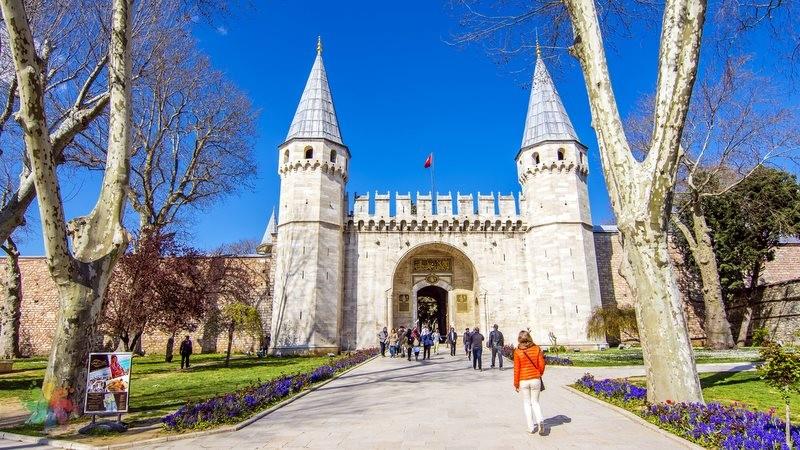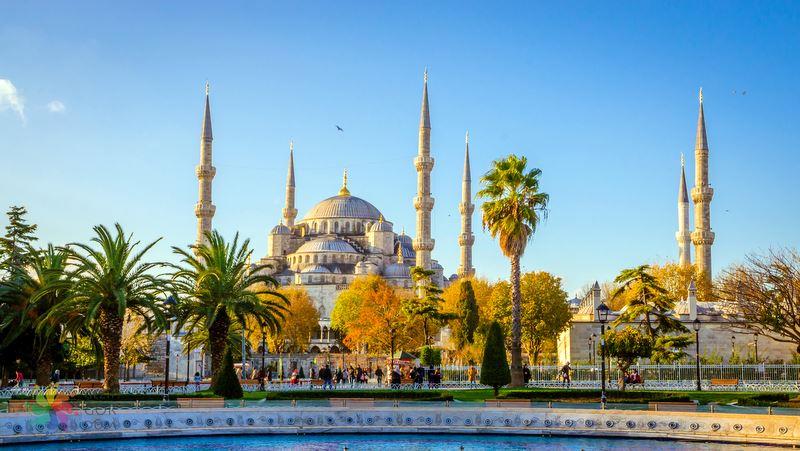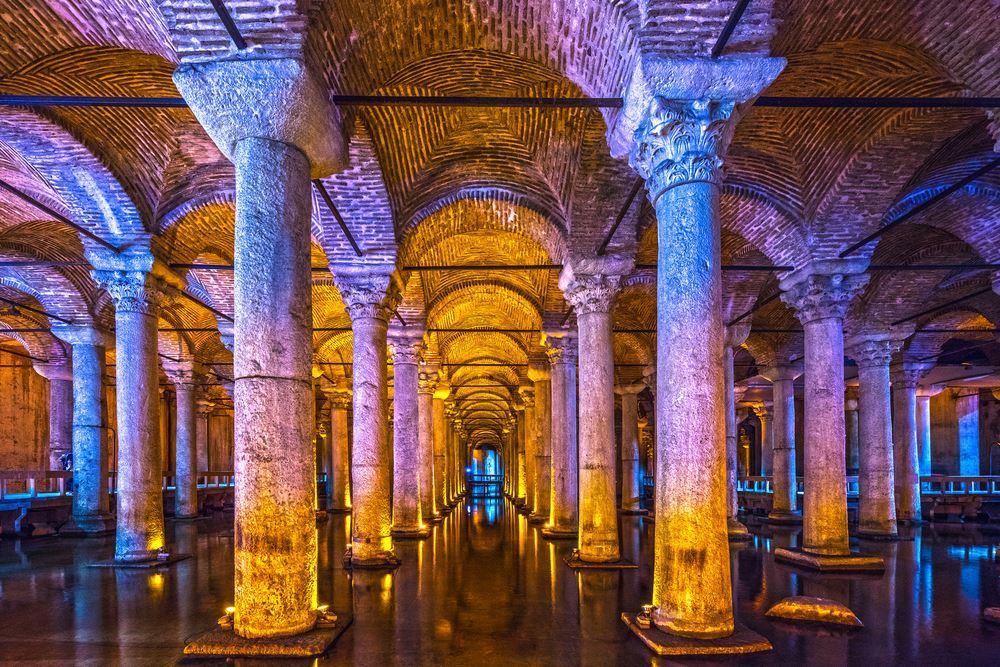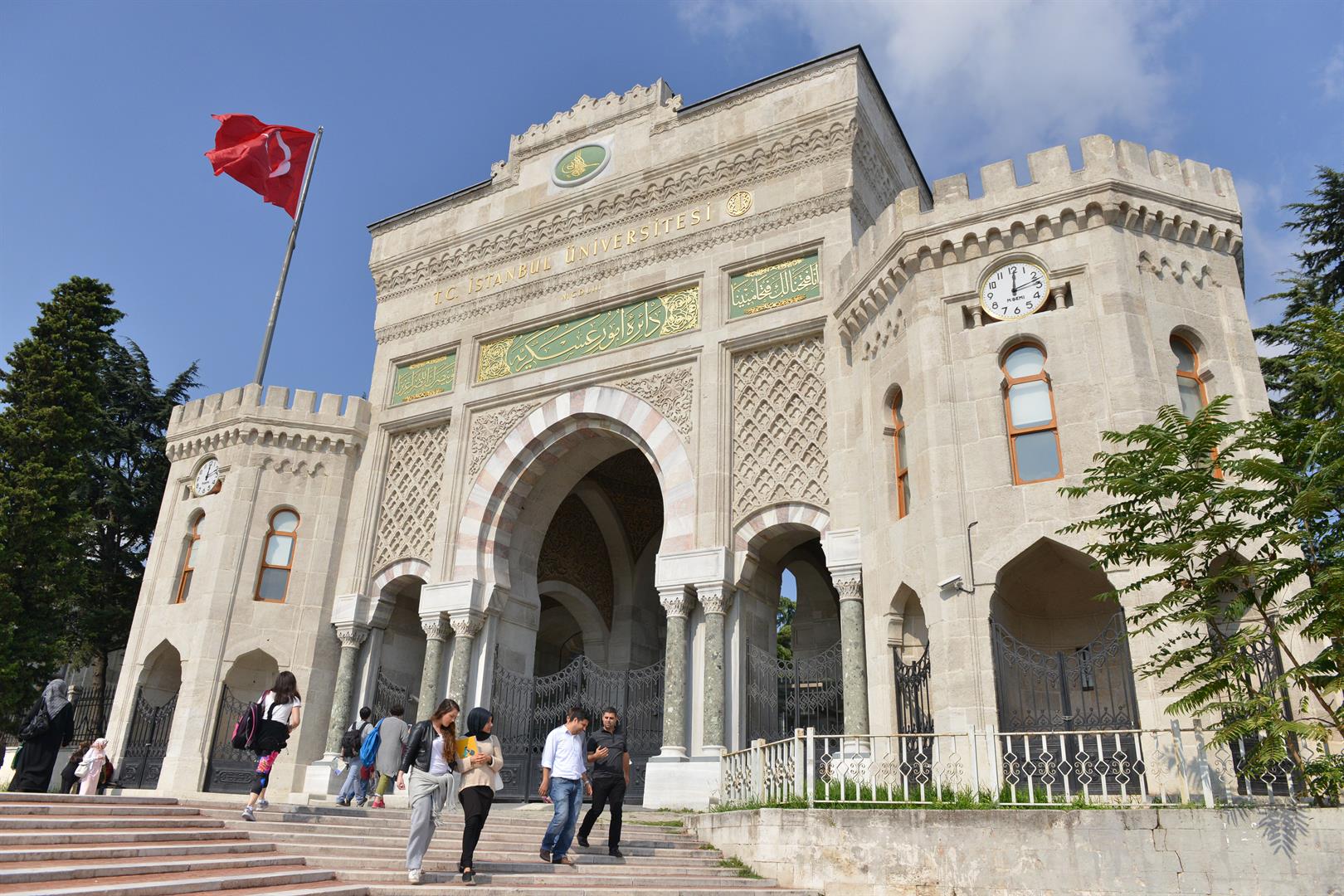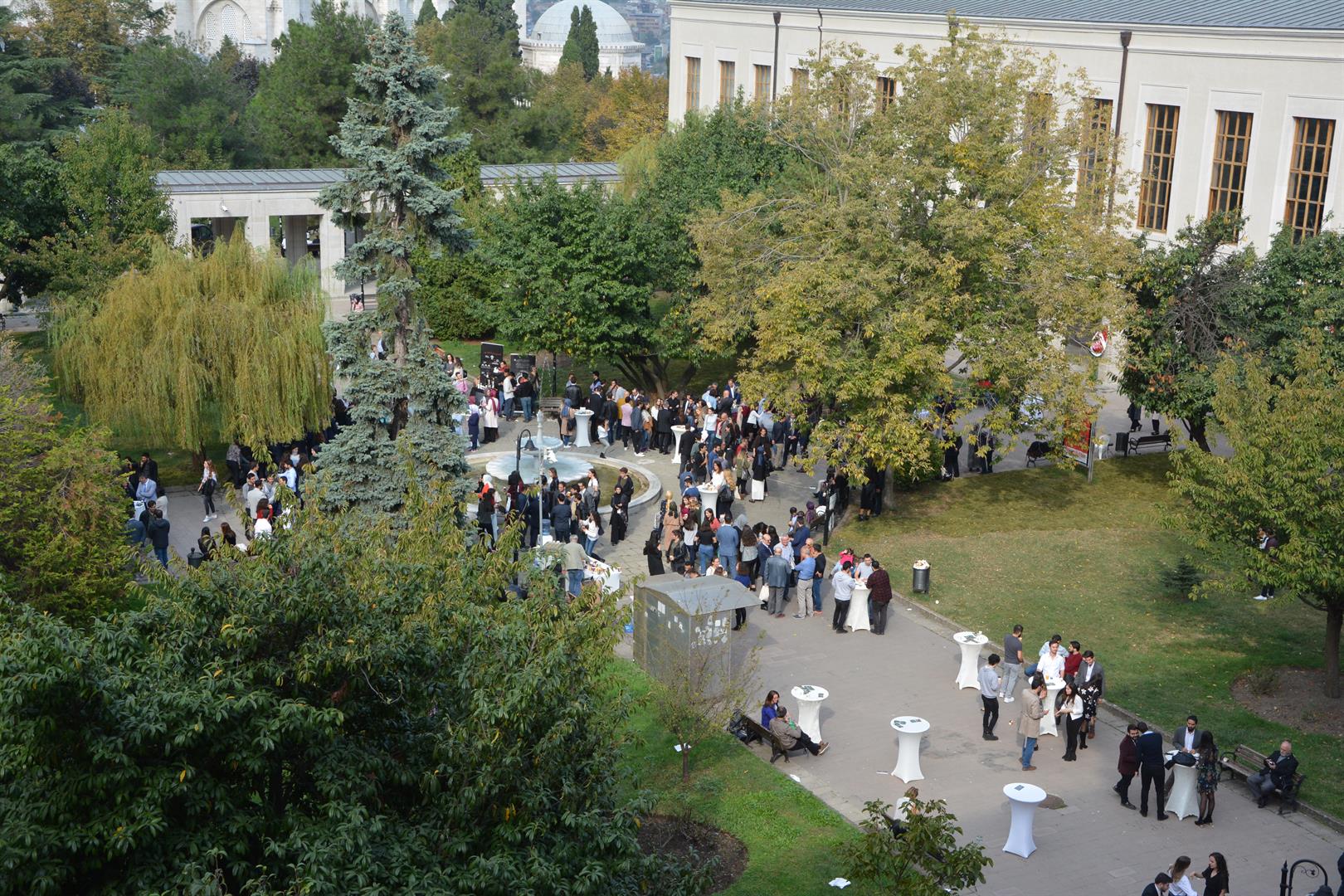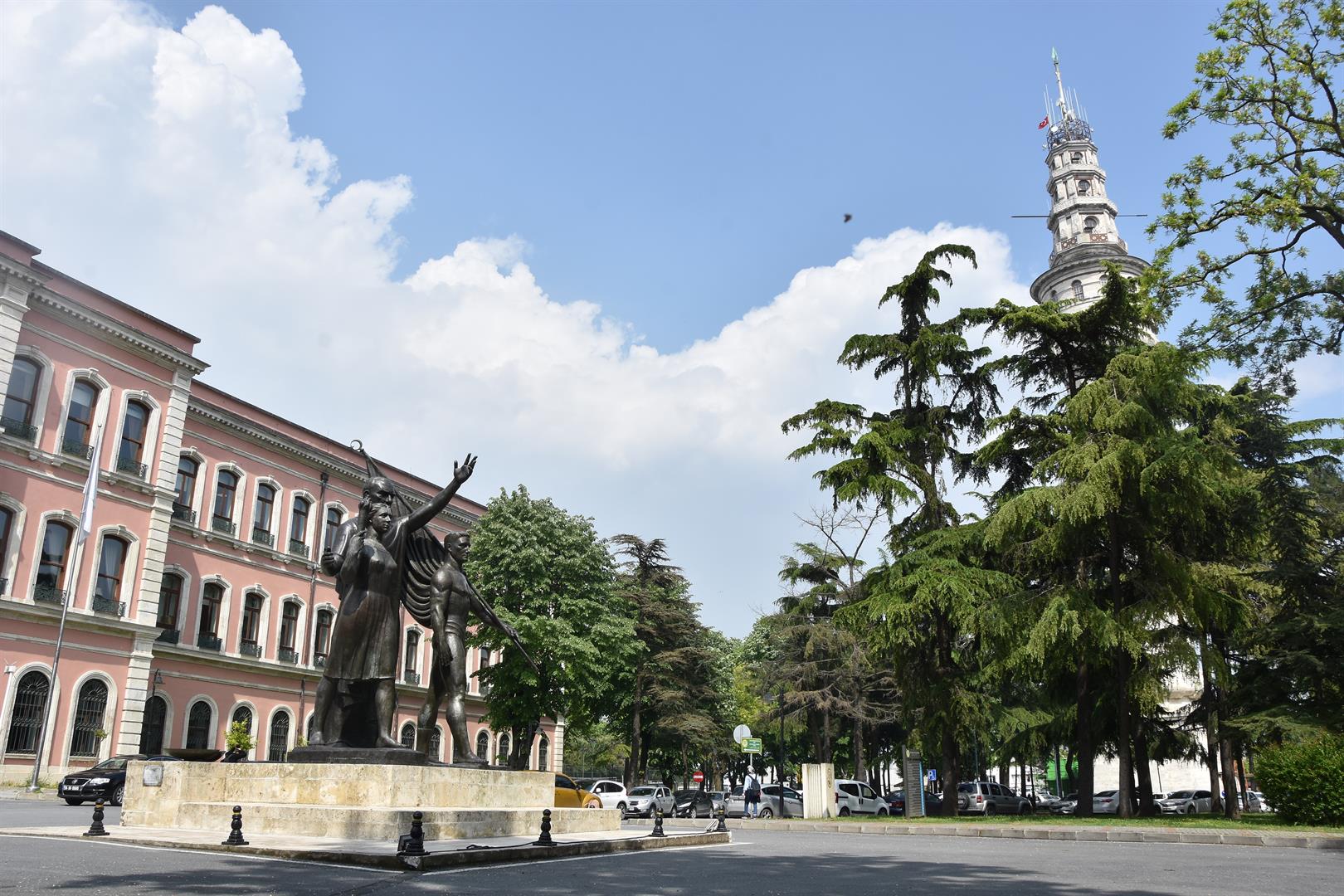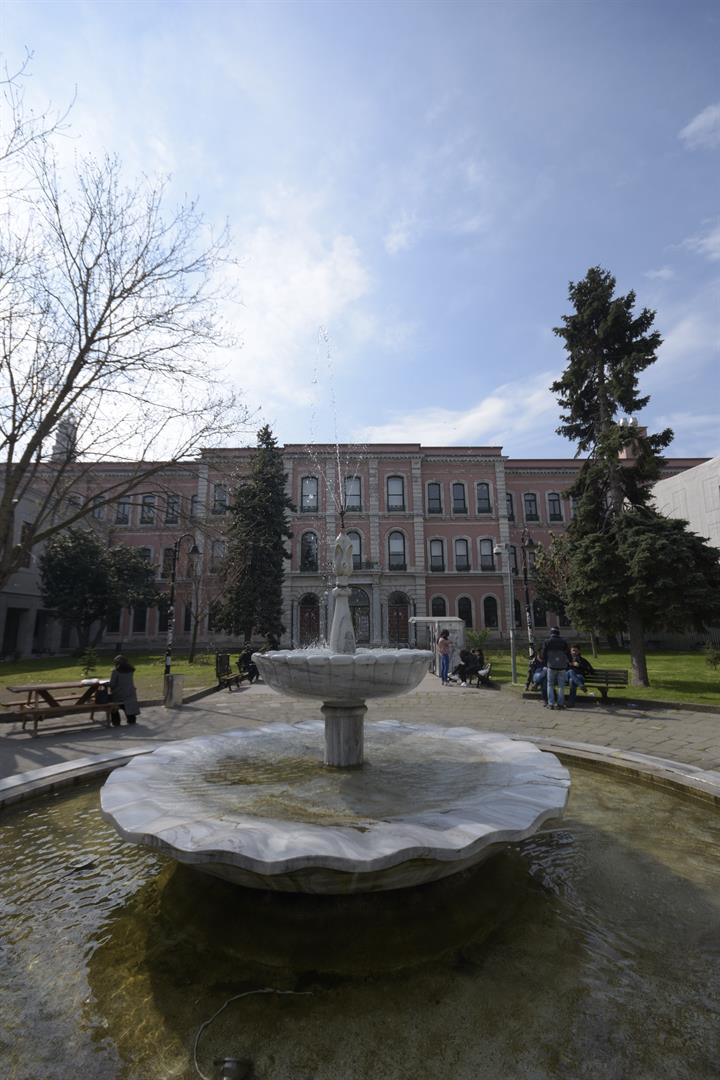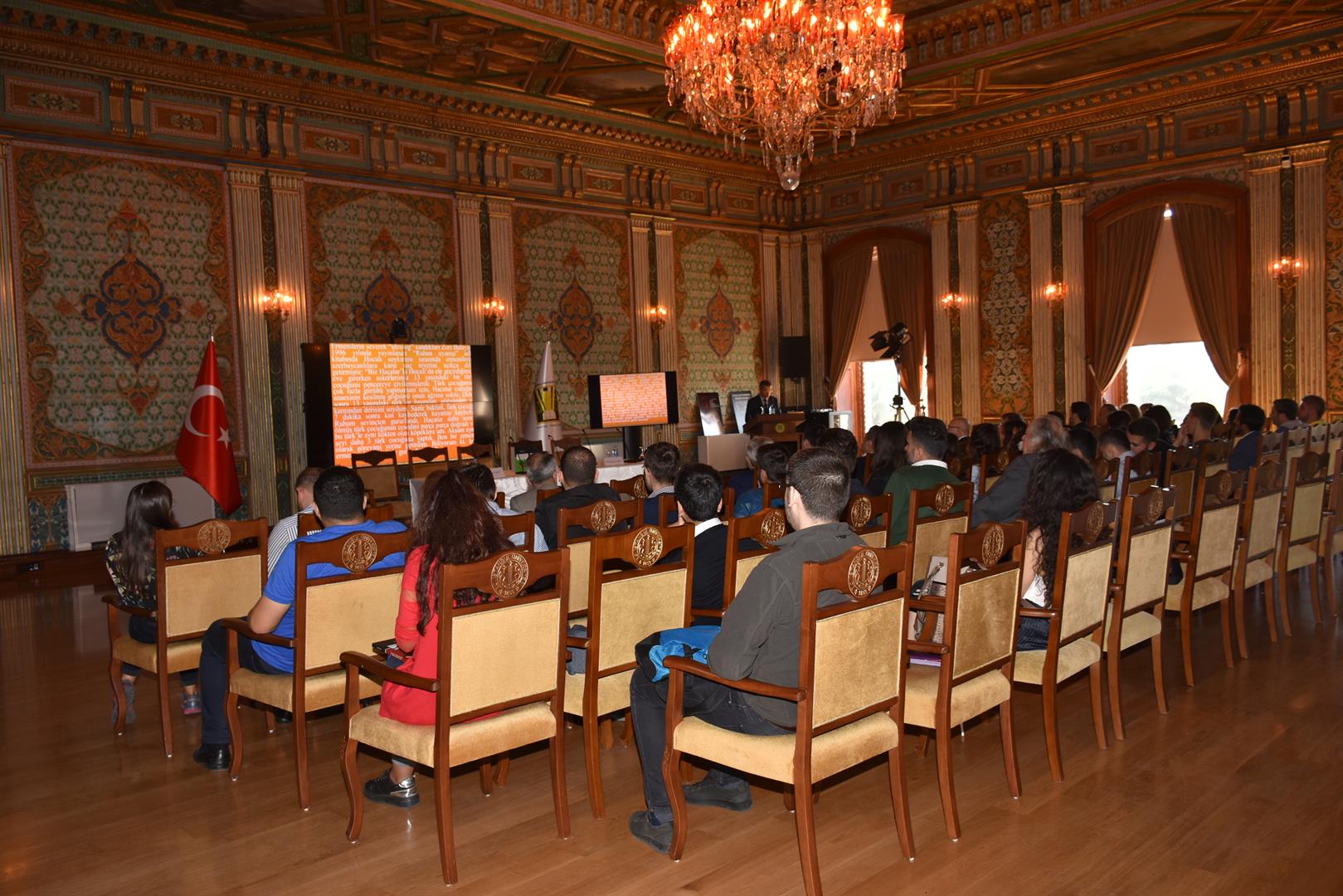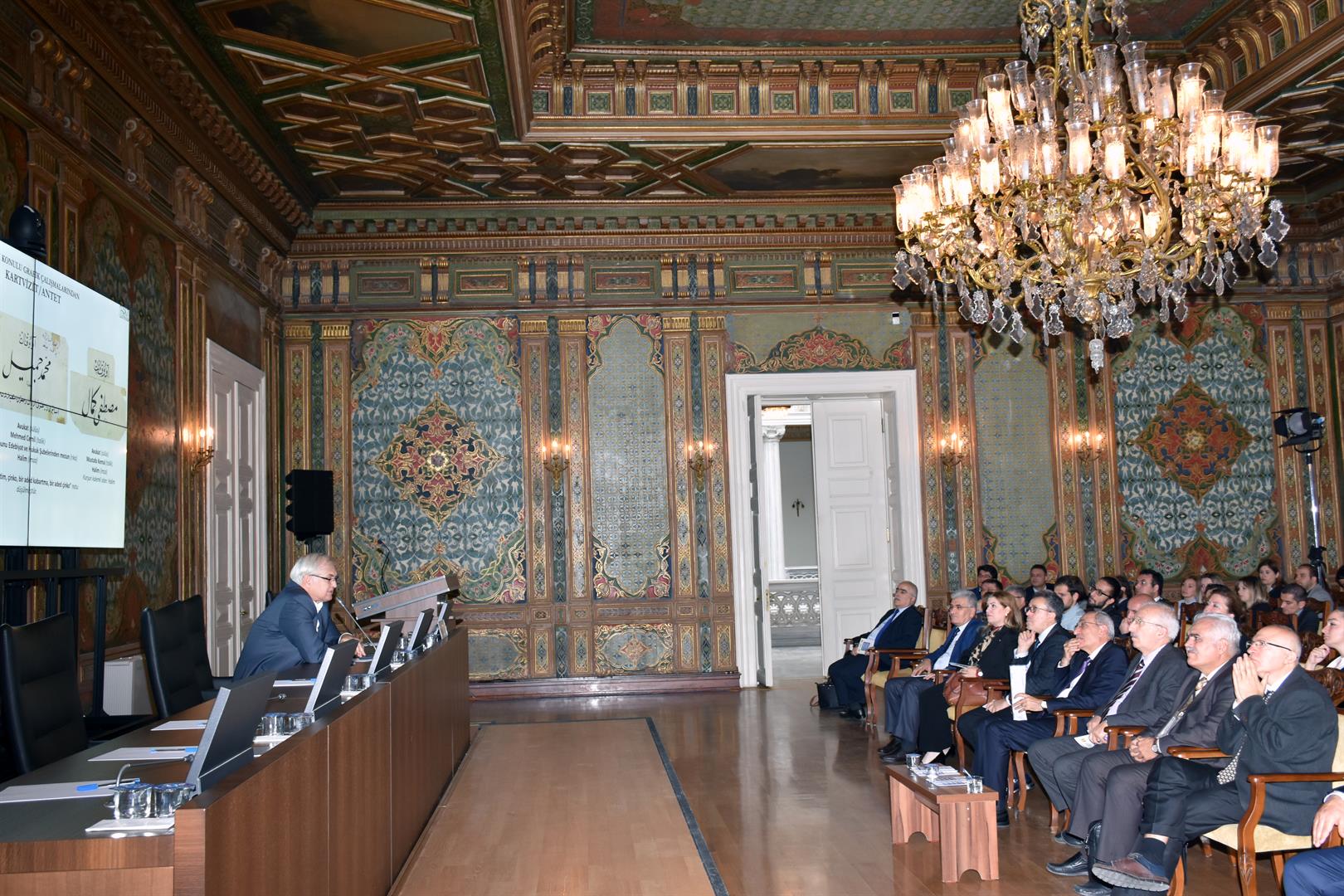XXVI AYLH | English
Prof. Dr. Fethi Gedikli
Prof. Dr. Cihan Osmanoğlu Karahasanoğlu
Dr. Öğr. Üyesi Ebru Kayabaş
Dr. Öğr. Üyesi Abdullah İslamoğlu
Dr. Öğr. Üyesi Ali Adem Yörük
Dr. Av. Sinem Oğiş
Arş. Görevlisi Mahmud Esad Kalıpçı
Arş. Görevlisi Esra Çetinkaya
Arş. Görevlisi Rıdvan Abdurrahman Demirtaş
Arş. Görevlisi Furkan Şahan
Arş. Görevlisi Göktuğ İdiz
CALL FOR PAPERS
List of Recommended Hotels
We recommend you to stay in the European side. For instance, Taksim, Besiktas, Eminonu, Sisli, Nisantasi, Cihangir, Pera are the areas that we recommend you to stay.
We will also announce the list of hotels soon.
Public Transportation
Metro (Train): https://www.metro.istanbul/en/
İETT (Bus): https://www.iett.istanbul/
Airport
In Istanbul there are two main airports. One is Istanbul Airport and the other one is Sabiha Gokcen Airport. Istanbul Airport is preferable as it is in the European side (where the conference will be held). And from Istanbul Airport to City Center (which is Taksim) you can get an airport shuttle (HAVAIST) which costs 18 TL. Just to remind you that the shuttle ticket should be bought either online or in the airport. It is NOT possible to buy the ticket on the bus.
Once you arrive to TAKSIM by HAVAIST, you can get a TAXI or other public transports into the hotels where you are staying.
http://havalimaniulasim.com/taksim-havaist-havas/
In case if you want to buy a flight to Sabiha Gokcen Airport, just bear in mind that this airport is on the Asian Side and it is far away to European Part. In that case you might need to use two different bus shuttles. For instance, first you need to get a shuttle (HAVATAS) from Sabiha Gokcen to Kadikoy, then from Kadikoy to Taksim. There is also a shuttle from Sabiha Gokcen to Taksim directly. However, it might take too long to arrive to the city center if you are coming from Sabiha Gokcen Airport (such as two hours). That’s why, we strongly recommend you to use Istanbul Airport.
Practical Informations
Ayasofya (Hagia Sophia): Hagia Sophia is the one of the most visited museums and most prominent monuments in the world in terms of art and the history of architecture. It has also been called “the eighth wonder of the world” by East Roman Philon as far back as the 6th century. During the summer, the visiting hours are between 09.00 and 19.00, with the final entry being at 18.00. Passes are available at the box office in the museum. https://ayasofyamuzesi.gov.tr/en
Topkapı Sarayı (Topkapı Palace): Topkapı Palace was not only the residence of the Ottoman sultans, but also the administrative and educational centre of the state. Initially constructed between 1460 and 1478 by Sultan Mehmed II, the conqueror of Constantinople, and expanded upon and altered many times throughout its long history, the palace served as the home of the Ottoman sultans and their court until the middle of the 19th century. Museum is open everyday except Tuesdays. Museum, Harem and Hagia Irene can be visited between 9:00 AM - 6:45 PM as last entrance to the Museum 6:00 PM. https://topkapisarayi.gov.tr/en
Kapalı Çarşı (Grand Bazaar): The Grand Bazaar in Istanbul is one of the largest and oldest covered markets in the world, with 61 covered streets and over 4,000 shops on a total area of 30,700 m2, attracting between 250,000 and 400,000 visitors daily. In 2014, it was listed No.1 among the world’s most-visited tourist attractions with 91,250,000 annual visitors. The Grand Bazaar at Istanbul is often regarded as one of the first shopping malls of the world. https://www.kapalicarsi.com.tr/
Süleymaniye Camii (Süleymaniye Mosque): The Süleymaniye crowns one of İstanbul's seven hills and dominates the Golden Horn, providing a landmark for the entire city. Though it's not the largest of the Ottoman mosques, it is certainly one of the grandest and most beautiful. It's also unusual in that many of its original külliye (mosque complex) buildings have been retained and sympathetically adapted for reuse. Commissioned by Süleyman I, known as 'the Magnificent', the Süleymaniye was the fourth imperial mosque built in İstanbul; the mosque's four minarets with their 10 beautiful şerefes (balconies) are said to represent the fact that Süleyman was the fourth of the Osmanlı sultans to rule the city and the 10th sultan after the establishment of the empire. The mosque and its surrounding buildings were designed by Mimar Sinan, the most famous and talented of all imperial architects. Construction occurred between 1550 and 1557. https://www.ktb.gov.tr/EN-113783/suleymaniye-mosque.html
Sultanahmet Camii (Blue Mosque): Sultan Ahmed Mosque is a historic mosque located in Istanbul, Turkey. It remains a functioning mosque, while also attracting large numbers of tourist visitors. It was constructed between 1609 and 1616 during the rule of Ahmed I. Its Külliye contains Ahmed's tomb, a madrasah and a hospice. Hand-painted blue tiles adorn the mosque’s interior walls, and at night the mosque is bathed in blue as lights frame the mosque’s five main domes, six minarets and eight secondary domes. http://www.sultanahmetcamii.org/
Yerebatan Sarnıcı (The Basilica Cistern): One of the magnificent ancient buildings of İstanbul is the Basilica Cistern located in the southwest of Hagia Sofia. Constructed for Justinianus I, the Byzantium Emperor (527-565), this big underground water reservoir is called as “Yerebatan Cistern” among the public because of the underground marble columns. As there used to be a basilica in the place of the cistern, it is also called Basilica Cistern. The cistern is 140 m long, and 70 m wide, and covers a rectangular area as a giant structure. https://www.yerebatan.com/en
Locations of the Conference
• Wednesday at Istanbul Bar Association 10 June 2020
• Thursday and Friday at Istanbul University Law Faculty 11-12 June 2020
Exclusions (Saturday) 13 June 2020
• Grand Bazaar and Blue Mosque (unlimited)
The Grand Bazaar (Turkish: Kapalıçarşı, meaning ‘Covered Market’; also Büyük Çarşı, meaning ‘Grand Market’) in Istanbul is one of the largest and oldest covered markets in the world, with 61 covered streets and over 4,000 shops on a total area of 30,700 m2, attracting between 250,000 and 400,000 visitors daily. In 2014, it was listed No.1 among the world's most-visited tourist attractions with 91,250,000 annual visitors. The Grand Bazar at Istanbul is often regarded as one of the first shopping malls of the world.
Sultan Ahmed Mosque (Turkish: Sultan Ahmet Camii; also known as the Blue Mosque) is a historic mosque located in Istanbul, Turkey. It remains a functioning mosque, while also attracting large numbers of tourist visitors. After the Peace of Zsitvatorok and the crushing loss in the 1603–18 war with Persia, Sultan Ahmet I decided to build a large mosque in Istanbul to reassert Ottoman power. It would be the first imperial mosque for more than forty years. While his predecessors had paid for their mosques with the spoils of war, Ahmet I procured funds from the Treasury, because he had not gained remarkable victories. The construction was started in 1609 and not completed until 1617.
It caused the anger of the ulama, the Muslim jurists. The mosque was built on the site of the palace of the Byzantine emperors, in front of the basilica Hagia Sophia (at that time, the primary imperial mosque in Istanbul) and the hippodrome, a site of significant symbolic meaning as it dominated the city skyline from the south. Big parts of the south shore of the mosque rest on the foundations, the vaults of the old Grand Palace.
• Hagia Sophia (limited to 25 people)
Hagia Sophia is the former Greek Orthodox Christian patriarchal cathedral, later an Ottoman imperial mosque and now a museum (Ayasofya Müzesi) in Istanbul, Turkey. Built in AD 537 at the beginning of the Middle Ages, it was famous in particular for its massive dome. It was the world's largest building and an engineering marvel of its time. It is considered the epitome of Byzantine architecture and is said to have "changed the history of architecture".
From the date of its construction's completion in 537 until 1453, it served as an Eastern Orthodox cathedral and the seat of the ecumenical patriarch of Constantinople, except between 1204 and 1261, when it was converted by the Fourth Crusaders to a Roman Catholic cathedral under the Latin Empire. The building was later converted into an Ottoman mosque from 29 May 1453 until 1931. It was then secularized and opened as a museum on 1 February 1935. It remained the world's largest cathedral for nearly a thousand years, until Seville Cathedral was completed in 1520.
• Topkapi Palace (limited to 25 people)
The Topkapı Palace is a large museum in Istanbul, Turkey. In the 15th century, it served as the main residence and administrative headquarters of the Ottoman sultans.
Construction began in 1459, ordered by Mehmed the Conqueror, six years after the conquest of Constantinople. Topkapı was originally called the "New Palace" (Yeni Saray or Saray-ı Cedîd-i Âmire) to distinguish it from the Old Palace in Beyazıt Square. It was given the name Topkapı, meaning Cannon Gate, in the 19th century. The complex was expanded over the centuries, with major renovations after the 1509 earthquake and the 1665 fire. The palace complex consists of four main courtyards and many smaller buildings. Female members of the Sultan's family lived in the harem, and leading state officials, including the Grand vizier, held meetings in the Imperial Council building.
Following the end of the Ottoman Empire in 1923, Topkapı was transformed into a museum by a government decree dated April 3, 1924. The Topkapı Palace Museum is administered by the Ministry of Culture and Tourism. The palace complex has hundreds of rooms and chambers, but only the most important are accessible to the public today, including the Ottoman Imperial Harem and the treasury, called hazine where the Spoonmaker's Diamond and Topkapi Dagger are on display. The museum collection also includes Ottoman clothing, weapons, armor, miniatures, religious relics, and illuminated manuscripts like the Topkapi manuscript. The complex is guarded by officials of the ministry as well as armed guards of the Turkish military. Topkapı Palace is part the Historic Areas of Istanbul, a group of sites in Istanbul that were added to the UNESCO World Heritage Site in 1985.
1) Registration for the Conference
To register for the conference please send us an email with your abstract (not more than 250 words) and your CV.
aylh2020istanbul@gmail.com
Once your paper is approved, please confirm that you will need to send the conference registration fee of 100 EURO to the account we provide during the later stage.
To register for the conference please click here
2) Registration to Gala dinner (12th of June)
The venue will be announced soon.
To register for the gala dinner please click here
3) The registration for the trips (13th of June)
To register for the trips please click here
• Grand Bazaar and Blue Mosque
• Hagia Sophia (limited to 25 persons)
• Topkapi Palace (limited to 25 persons)
I hereby give consent for my personal data included in the registration forms to be processed for the organisational and promotional purposes of 26th Annual Forum of Young Legal Historians in accordance with the REGULATION (EU) 2016/679 OF THE EUROPEAN PARLIAMENT AND OF THE COUNCIL of 27 April 2016 on the protection of natural persons with regard to the processing of personal data and on the free movement of such data, and repealing Directive 95/46/EC (General Data Protection Regulation).
The detailed Programme shall be available on Forum website shortly after the closing date for abstract submissions.
